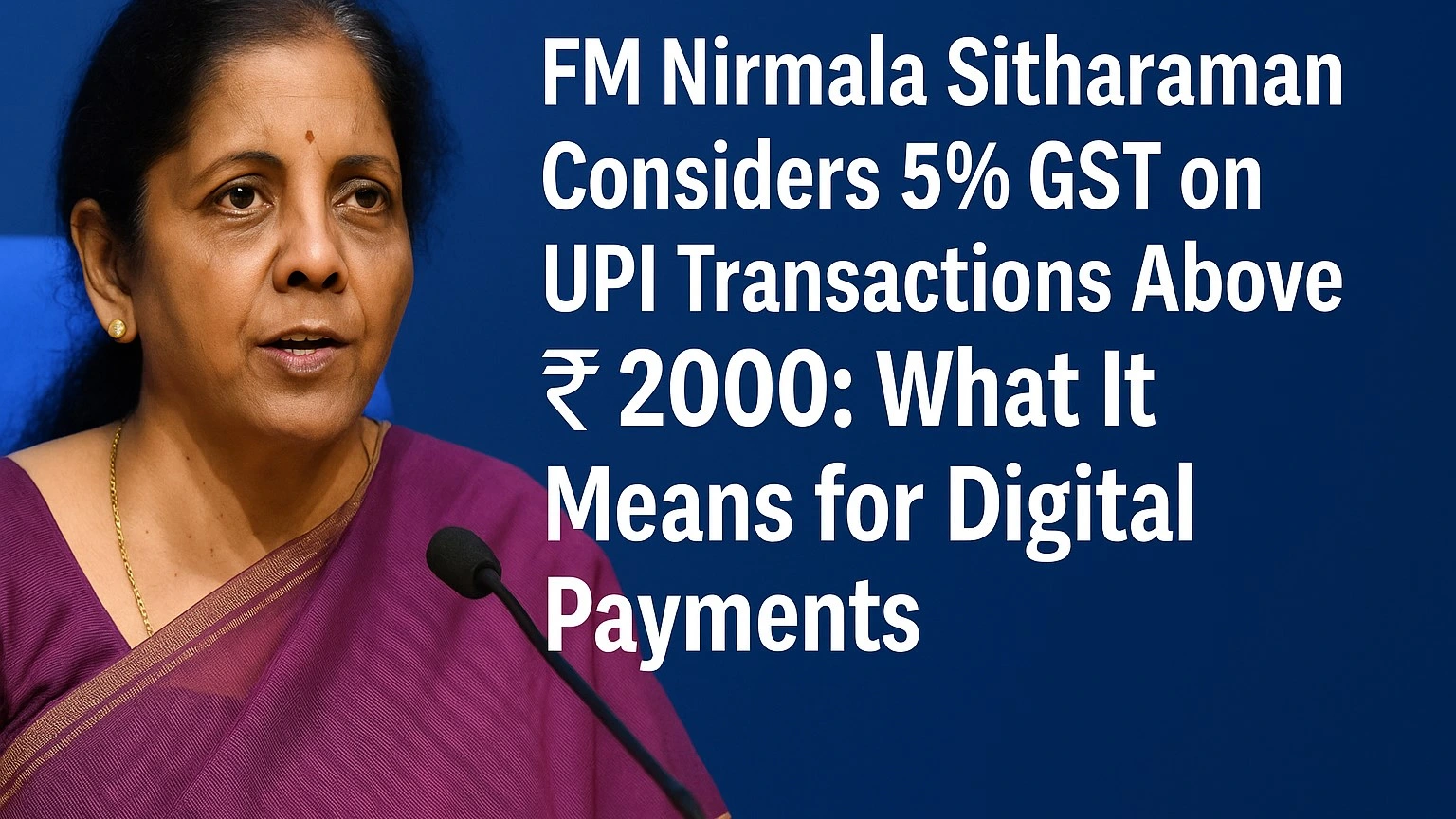India’s digital payments ecosystem has witnessed explosive growth over the past few years, led by the Unified Payments Interface (UPI). With over 11 billion UPI transactions processed in March 2025 alone, the platform has become the backbone of everyday financial transactions. However, recent developments suggest a potential policy shift that could impact how Indians use UPI, especially for larger transactions.
Finance Minister Nirmala Sitharaman is reportedly considering a proposal to impose a 5% Goods and Services Tax (GST) on UPI transactions exceeding ₹2000. If implemented, this move could have significant ramifications for consumers, businesses, fintech platforms, and the broader goal of a cashless economy.
Understanding the Proposal
At present, UPI transactions are free of GST, making them one of the most cost-effective ways for both consumers and merchants to transfer money digitally. The new proposal, however, seeks to apply GST to UPI transactions over ₹2000 in value, potentially treating them similarly to certain financial services that are already taxed.
While the idea is still in its early stages, it’s part of a broader conversation within the government on how to enhance tax revenues without imposing direct taxes on individuals. The government has neither confirmed nor denied the move, but the suggestion has already sparked debate among stakeholders.
Why Is GST on UPI Transactions Being Considered?
The primary motivation behind the proposal is likely revenue generation. With India’s fiscal deficit under pressure and various welfare schemes in need of funding, indirect taxation becomes an attractive route. Given the rapid rise of digital payments, taxing high-value UPI transactions could yield significant returns.
Another possible reason is to bring parity with other forms of digital payments and financial services that are subject to taxation. By applying GST on large UPI transactions, the government could level the playing field.

Potential Impact on Consumers and Businesses
1. Cost to Consumers:
If implemented, the GST will add a 5% cost on every UPI transaction above ₹2000. For instance, a ₹3000 transfer would incur a ₹150 tax. While this may not affect all users, those who frequently make high-value transfers—like rent payments, vendor transactions, or freelance payments—could feel the pinch.
2. Small Business Burden:
Many small and medium enterprises (SMEs) rely on UPI for ease of payments. An additional tax burden may push them toward alternative payment methods, or even back to cash, which would be a step backward for India’s digital goals.
3. Fintech Industry Concerns:
Fintech startups and payment service providers may witness a slowdown in transaction volumes. The proposal could also demand operational changes, including new billing mechanisms, GST compliance updates, and customer communication.
Counterarguments and Criticisms
Digital economy advocates have criticized the idea, warning that taxing UPI transactions could slow down digital adoption—especially in semi-urban and rural areas where UPI has only recently gained traction. Critics argue that such a move could reverse the positive effects of demonetization and the Digital India campaign.
Others worry it may encourage people to return to cash transactions, defeating years of efforts by both government and industry to reduce dependency on physical currency.
What Happens Next?
As of now, the Finance Ministry has not officially confirmed the imposition of this tax. It’s likely that the proposal will undergo scrutiny, and public as well as industry feedback may influence the final decision. Meanwhile, many experts suggest that if the tax is implemented, exemptions or tiered models should be considered to protect small users and businesses.
Final Thoughts
India’s digital payment revolution has been a model for the world. Introducing GST on UPI transactions above ₹2000 may serve revenue goals, but it comes with the risk of undoing hard-earned progress in digital financial inclusion. As the conversation evolves, policymakers must weigh short-term fiscal gains against long-term economic transformation.
Also Read
Govt Denies 18% GST on UPI Transactions Over Rs 2,000
The U.S. Economy: Going Up or Down? (2025 Update)
How Rupee Depreciation Can Be India’s Shield Against Chinese Dumping

Add a Comment